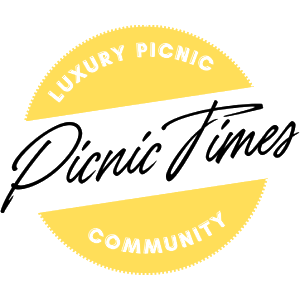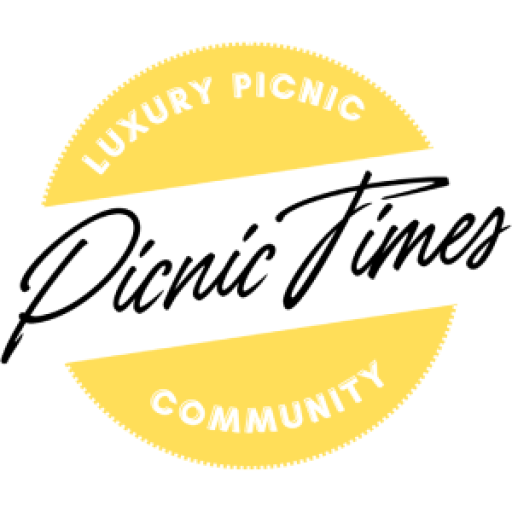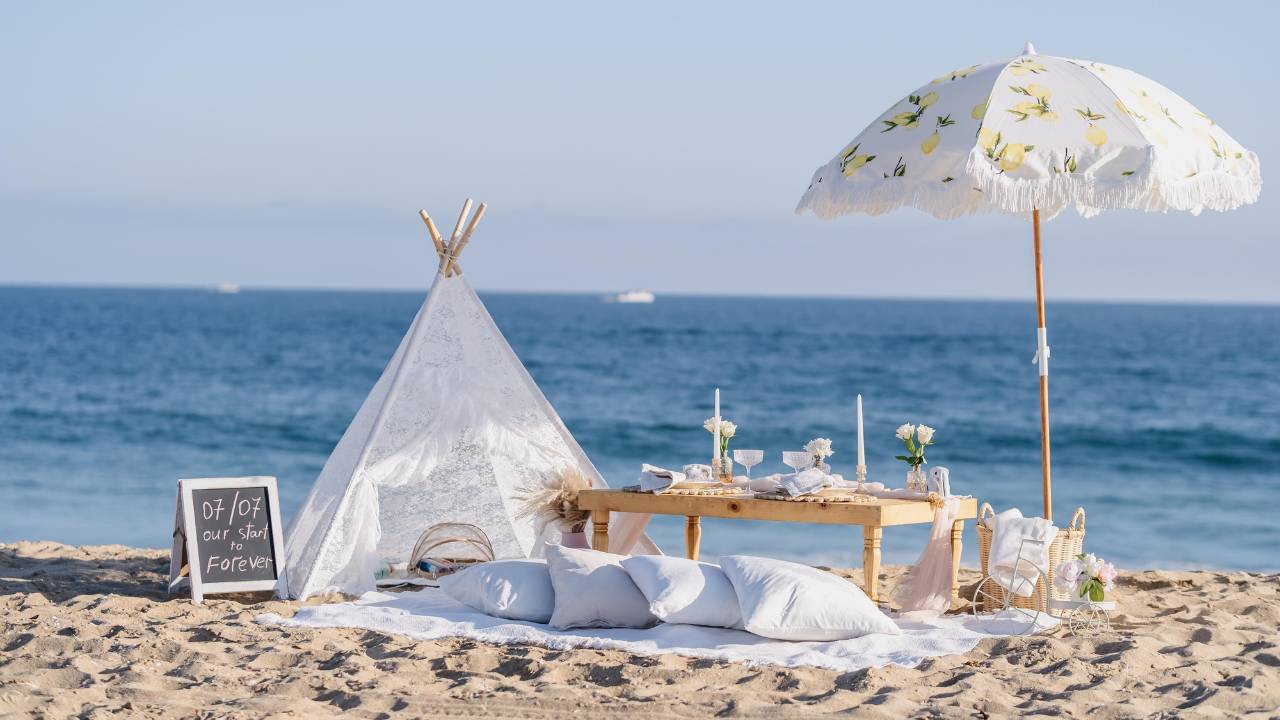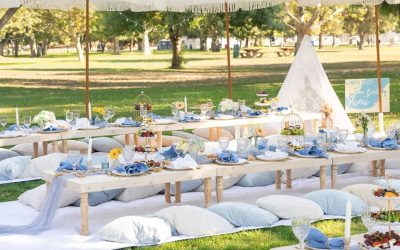I remember sketching my first business idea on a napkin. It was a luxury picnic company, of course. It had a name, but it didn’t have a soul yet. That’s what branding gives you.
Lots of people think event branding is just about getting a cool logo. But that’s like calling a welcome mat a house. Your brand is the entire home you build for your clients. It’s the feeling they get when they walk through the door, the stories they tell when they leave, and the reason they want to come back.
So, what is event branding? It’s the unique story and feeling your business creates at every single touchpoint. It sounds big and abstract, I know. That’s why we’re not going to just talk about it.
We’re going to build it together. This article is a blueprint. By the end, you won’t just have ideas. You’ll have a framework for your own business. This blueprint is one of the most important parts of the foundational steps of starting your business. Let’s get to work.
Step 1: Pouring the Foundation (Your ‘Why’ & ‘Who’)
Before you can build anything that lasts, you need a solid foundation. You have to know what ground you’re building on and exactly who you’re building for.
This is the most crucial piece of any successful event branding strategy, and it has nothing to do with colors or fonts. It’s about clarity.
A few years ago, I helped a friend who was stuck. Her picnic business was beautiful, but she was trying to be everything to everyone. She offered kids’ birthday party themes one day and serious corporate lunches the next.
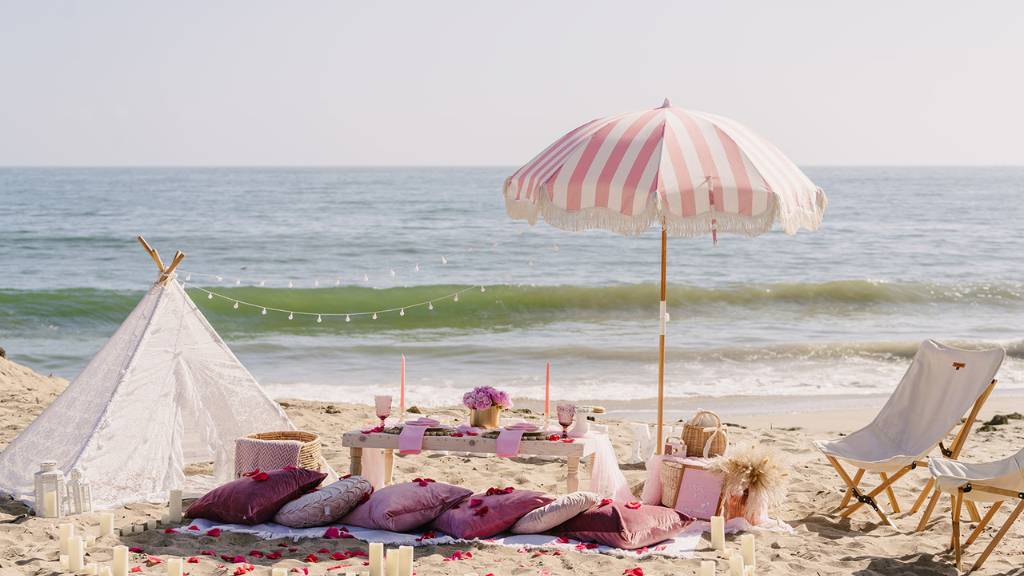
She was exhausted, and her message was muddled. The problem wasn’t her service. It was her foundation. We spent an afternoon just talking. Not about logos, but about why she started this in the first place.
What lit her up? Who was the one client she wished she had a hundred of? Answering those questions changed everything. You have to do the same. This work anchors every other decision you’ll make.
Blueprint Box #1: Your Ideal Client Sketch
Close your eyes. Picture the one person you dream of working with. The one who totally gets what you do. Let’s sketch them out.
- What’s their name, and what do they do for a living?
- What are they celebrating? A quiet anniversary, a big promotion, a weekend with friends?
- What do they value most in an experience? (e.g., effortless luxury, unique photo ops, total convenience)
- The feeling they want to have at their event is: __________.
Blueprint Box #2: Your Mission Statement
Your mission is your brand’s true north. It’s your reason for being, boiled down to a single thought. Let’s define it.
- My business exists to help (Your Ideal Client from above) _______ create (Their Desired Feeling) _______ by providing them with _______ (Your Unique Service).
Remember, a strong foundation starts with clarity, which often begins with choosing a memorable business name.
Step 2: Framing the House (Your Brand Personality)
With a solid foundation, you can start building the frame. This is the structure that gives your brand its unique character.
Is it a cozy, rustic cottage? Or is it a sleek, modern loft with city views? Neither is right nor wrong, but you can’t be both.
Your brand’s personality dictates how it looks, sounds, and acts. When you define it, your marketing stops feeling like a chore and starts feeling like a natural conversation.
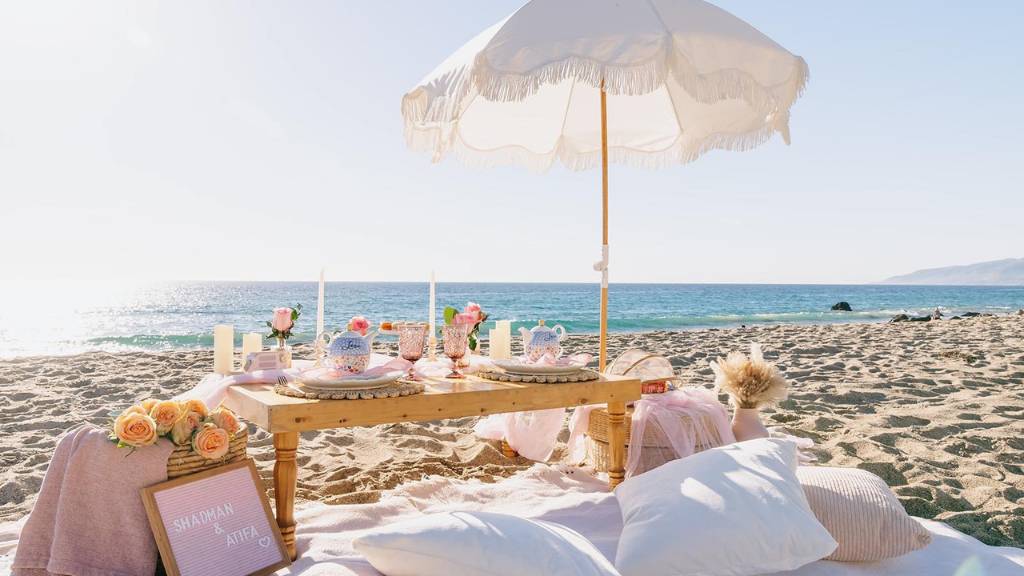
You’ll know exactly what to post on Instagram because you’ll know what your brand would say. You’ll know how to write an email because you’ll know what your brand would sound like.
This is about amplifying the truest parts of what you want your business to be. A clear personality attracts the right people and gently repels the ones who aren’t a good fit. And that’s a good thing.
Blueprint Box #3: The 3-Word Personality
If your brand walked into a room, how would people describe it? Pick the three words that feel most true. Don’t overthink it.
(Circle three or add your own: Whimsical, Elegant, Modern, Rustic, Playful, Sophisticated, Bold, Minimalist, Earthy, Luxe, Nostalgic, Vibrant)
- My brand is: _______, _______, and _______.
Blueprint Box #4: Your Brand’s Tone of Voice
Now, let’s define how your brand actually sounds. This will guide everything from your website copy to your social media captions.
- We speak to our clients like a (e.g., trusted friend, expert concierge, cheerful guide) _______.
- One phrase my brand would say is: “__________.”
- One phrase my brand would never say is: “__________.”
Step 3: The Interior Design (Your Visual Identity)
Now for the fun part: the interior design where you bring your brand’s personality to life with colors, textures, and shapes.
It’s the paint on the walls, the style of the furniture, and the art you hang. Every visual element should be a direct reflection of the three personality words you chose in the last step.
This is where you’ll come up with all your best event branding ideas. If your brand is “Rustic,” you’re probably not going to use a neon pink, blocky font.
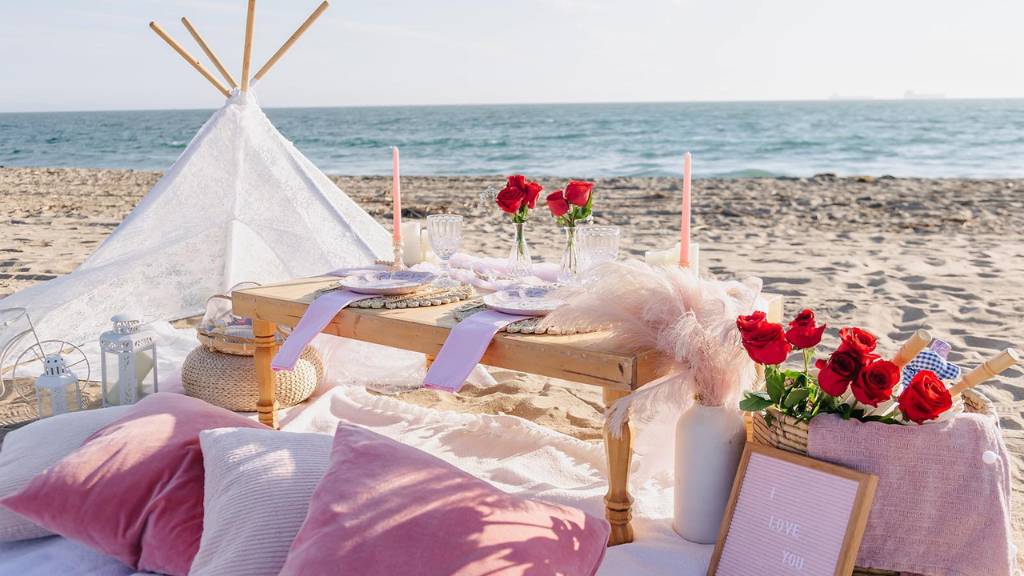
If it’s “Modern,” you’ll likely steer clear of distressed wood textures and script typography. See how the foundation and frame make these decisions easier?
A mood board is your best friend here. Hop on Pinterest and create a secret board. Search for images that capture the feeling of your three words.
Look for patterns in colors, fonts, and photography styles. This is your chance to collect inspiration that will become the visual language for your business.
Blueprint Box #5: The Mood Board & Color Palette
Look at your inspiration. Based on your three personality words, what colors keep showing up? Let’s build your palette.
- My primary color (for logos, key headings) is: _______.
- My supporting colors (for accents, details) are: _______ and _______.
- My neutral color (for backgrounds, text) is: _______.
Blueprint Box #6: The Font Formula
Fonts have feelings, too. Let’s pick two that tell your brand’s story clearly and consistently.
- My Header Font feels _______ (e.g., elegant, strong, friendly, classic).
- My Body Font feels _______ (e.g., clear, warm, modern, readable).
Remember, strong visual choices translate everywhere, right down to the welcome message you put on customizable signage like felt letter boards.
A Look at Event Branding Examples
To see this in action, let’s imagine two different picnic companies.
First, let’s look at Picnic Makers. Founded by the husband-and-wife team Vlad and Olga, the company was born from a passion for creating vibrant, boho-chic gatherings. Their brand personality is Joyful, Polished, and Classic.
This identity is perfectly reflected in their services, which range from luxury pop-up picnics and elegant tablescapes to movie nights and proposals. Visually, they use a bright and refined color palette, often anchored by a signature blue that feels fresh and celebratory.
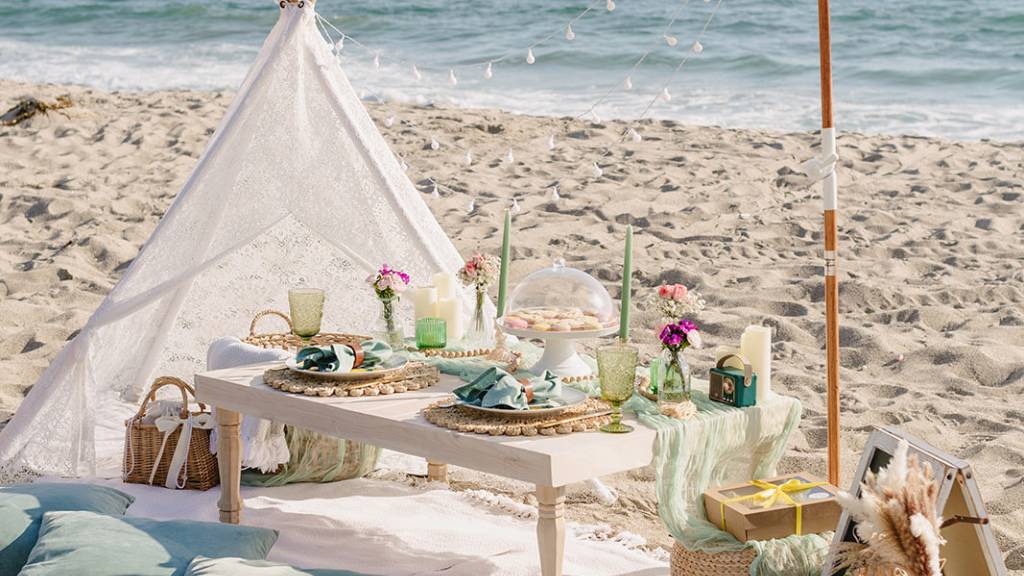
Their typography is clean and modern, making their online booking process feel accessible and professional. The photography is energetic, focusing on the beautiful colors of the food and the happy, shared experience of a gathering.
That success story then evolved. The team at Picnic Makers expanded its vision to create Dolce Vita Makers, a full-service event planning agency. While it shares a founder in Vlad, who serves as CEO, its brand personality is intentionally different: Romantic, Luxurious, and Timeless.
This brand is aimed at a client dreaming of a more comprehensive, high-end planning experience, specializing in weddings, elaborate proposals, and corporate events. You can feel this shift instantly. Their color palette is softer, built on blushes, warm creams, and elegant gold accents that suggest classic European romance.
Their name is often presented in a graceful script, and their photography focuses on intimate, light-drenched moments that feel both candid and artfully composed, perfectly aligning with their promise to make every event a masterpiece.
Both are picnic companies, but their event branding examples tell completely different stories. Neither is better, just different. Their visual identity is a direct result of their brand foundation, and that consistency is key to staying ahead of event design trends.
Step 4: The Housewarming (Branding the Full Experience)
This is where we go deeper than the competition. The real magic happens when you create truly branded events by thinking about the housewarming party. You should invite your clients inside and immerse them in your brand with all five senses.
When I plan a setup, I don’t just think about how it will look in photos. I think about the entire sensory experience. What will the client hear when they arrive? What will they smell?
What is the texture of the napkin they pick up? These details are what make an experience feel premium and unforgettable. They turn a pretty setup into a core memory.

This multi-sensory approach is your secret weapon. Most businesses stop at the visuals. You won’t. You’ll build a brand that people can see, hear, touch, taste, and smell. That’s how you create raving fans.
Blueprint Box #7: Your Multi-Sensory Map
Let’s go beyond the visuals. How will your clients experience your brand with all five senses? Brainstorm one key detail for each.
- Sight: My signature visual detail will be _______ (e.g., vintage rugs, a specific floral style, copper cutlery). This is where artful plating techniques shine.
- Sound: The vibe of my curated event playlist is _______ (e.g., instrumental lo-fi, 70s folk, indie pop).
- Taste: Our food and drink will always reflect our commitment to _______ (e.g., local sourcing, artisanal quality, fun themes). We have lots of creative food theme ideas to explore.
- Touch: The first texture clients will notice is the _______ (e.g., soft linen napkins, heavy glassware, plush velvet pillows). The quality of details, like elegant cloth napkins, makes a huge difference.
- Smell: The subtle, signature scent of our events will be _______ (e.g., fresh eucalyptus, a specific citronella candle, sandalwood).
A Note on Corporate Event Branding
Thinking this only applies to romantic proposals? No. This multi-sensory approach is especially powerful for corporate event branding. Companies want to treat their teams to an experience that feels special, not like a generic staff lunch.
When you can tell a corporate client, “Our package includes a curated playlist to match your company’s vibe and a menu sourced from local businesses to reflect your commitment to the community,” you elevate the conversation.

You’re selling a thoughtfully crafted brand experience that makes them look good. It’s an easy way to stand out and a key strategy when branding for corporate events.
Your Blueprint is Ready
Take a look at what you’ve done. You started with a blank page, and now you have a blueprint. You have a distinct personality and a plan to bring it all to life.
This document is now your guide. Use it to make decisions with clarity and confidence. When you’re consistent, your clients will know exactly why they should choose you. That is the foundation of powerful event branding. Now, go build something amazing.
